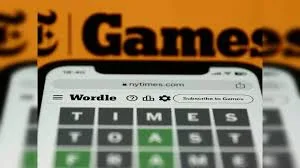Welcome to another brain-teasing Wednesday with NYT Wordle #1600! If you’re staring at yellow tiles wondering where things went wrong, or you’ve burned through three guesses with nothing but gray squares, you’re in the right place. Today’s puzzle sits at a comfortable difficulty level with players averaging 3.5 attempts—but that doesn’t make it easy when your streak’s on the line. Let’s decode this five-letter mystery together with strategic hints that won’t spoil the fun.
Table of Contents
Today’s NYT Wordle Quick Stats
| Detail | Information |
|---|---|
| Puzzle Number | #1600 |
| Date | Wednesday, November 5, 2025 |
| Answer | SHORT |
| Average Guesses | 3.5 |
| Solved in ≤3 Guesses | 41.8% |
| Average Luck Score | 61.9 |
| Average Skill Score | 87.3 |
Strategic Hints Without Spoilers
Vowel Intelligence: Today’s word contains exactly 1 vowel. If you started with vowel-heavy words like “ADIEU” or “AUDIO,” you’ve already narrowed possibilities significantly.
Letter Repetition: Good news for pattern seekers—there are no repeated letters. Every position holds a unique character, making elimination strategies more straightforward.

Starting Letter Clue: The word begins with “S”—one of the most common starting letters in English, appearing in roughly 6% of five-letter words.
Contextual Hint: Think about physical dimensions and measurements. This word describes something lacking in length, height, or duration compared to standard expectations.
Part of Speech: Today’s answer functions as an adjective, but can also serve as a noun or adverb depending on context.
Still stumped? Try starting with words like “STERN,” “STALE,” or “SHOUT” to test common S-combinations and vowel placement.
The Answer Revealed
Last chance to look away!
⚠️ SPOILER ALERT ⚠️
Today’s Wordle #1600 answer is: SHORT
Why This Word Works
SHORT represents a clever mid-difficulty pick that tests players’ ability to work with limited vowel options. With just one vowel (O) positioned in the second slot, many players likely struggled if their starting words emphasized A, E, or I vowels.
The double consonants (SH at the beginning, RT at the end) create recognizable letter combinations that experienced players identify quickly. However, the limited vowel situation means luck plays a bigger role than usual—hence the moderate 61.9 luck score.
According to WordleBot’s analysis, 41.8% of players cracked it within three guesses, suggesting that strategic starting words gave a significant advantage. The high skill score (87.3) indicates most players made intelligent guesses based on eliminated possibilities.
Fascinating Etymology and Facts
The word “SHORT” traces back to Old English “sceort,” meaning brief or small in length. Its linguistic journey spans over a millennium, making it one of English’s most enduring descriptive terms.
Literary Significance: In literature, “short” revolutionized storytelling with the short story genre. Writers like Edgar Allan Poe and Anton Chekhov elevated brief narratives to art forms, proving powerful stories don’t require novel-length page counts.
Temporal Applications: Beyond physical dimensions, “short” dominates time-related expressions—”short notice,” “short break,” “short-lived”—reflecting our constant relationship with duration and brevity.
Cultural Impact: The phrase “sell short” (underestimating something or someone) demonstrates how physical descriptors evolve into metaphorical wisdom embedded in everyday language.

Yesterday’s Challenge: VENUE
Missed Tuesday’s puzzle? The November 4th answer was VENUE—a common word that averaged 4.1 guesses with only 16.1% solving it in three attempts. The double vowel pattern (E-U-E) likely tripped up many players, especially those who didn’t identify the vowel-heavy structure early.
For comprehensive Wordle strategies and puzzle solutions, check out our previous coverage where we break down tactical approaches for maintaining winning streaks.
Recent Wordle Solutions
Building pattern recognition? Here are the past five answers:
- November 4, 2025 (#1599): VENUE
- November 3, 2025 (#1598): AWOKE
- November 2, 2025 (#1597): RABID
- November 1, 2025 (#1596): MOTEL
- October 31, 2025 (#1595): ABHOR
Notice the pattern? Recent puzzles have featured common vowel placements and familiar consonant combinations. This suggests the NYT editors are balancing accessibility with challenge—perfect for maintaining engagement without frustrating casual players.
Winning Strategies for Tomorrow
Want to improve your Wordle game? These proven techniques help maintain streaks:
Start Strong: Use vowel-rich opening words like “AROSE,” “AUDIO,” or “SLATE” to identify vowel positions immediately. For consonant-heavy days, try “SHIRT” or “CLAMP.”
Eliminate Efficiently: After your first guess, focus on eliminating high-frequency letters (E, T, A, O, I, N, S, R) rather than fishing for the exact answer.
Think Phonetically: Common letter combinations like SH, TH, CH, and ST appear frequently. If you spot these patterns forming, explore words featuring them.
Don’t Waste Guesses: If you’ve identified 4 letters with good positioning, take a moment to mentally list possible words rather than random guessing. Strategic thinking beats rapid guessing.
For deeper strategy guides and daily puzzle coverage, explore our comprehensive gaming section where we analyze patterns, share advanced techniques, and celebrate the word game community.
Beyond Wordle: NYT Game Universe
Conquered today’s Wordle? The New York Times offers a rich puzzle ecosystem:
- Connections: Group words by hidden thematic links
- Spelling Bee: Create words from seven letters
- Mini Crossword: Quick daily crossword fix
- Letter Boxed: Connect letters around a square
Each game tests different linguistic skills, keeping your brain sharp and your competitive spirit alive.
Frequently Asked Questions
Q: Why did today’s Wordle seem easier/harder than the statistics suggest?
Wordle difficulty is highly subjective and depends on your starting word strategy. Today’s answer “SHORT” with its single vowel and common S-start might seem easy if your opener was “SPORT” or “SHIRT”—you’d essentially solve it in two guesses. However, players who started with vowel-heavy words like “ADIEU” faced tougher elimination work since only the O registered. The 3.5 average and 41.8% three-guess success rate reflect this split experience. WordleBot’s luck score (61.9) confirms that starting word choice significantly impacted difficulty. Players who naturally gravitated toward S-starting words enjoyed easier paths, while others needed more strategic elimination. This variability is precisely what makes Wordle addictive—the same puzzle feels completely different based on your approach.
Q: How can I improve my Wordle average from 4+ guesses to 3 or fewer consistently?
Consistency in Wordle comes from systematic elimination rather than lucky guessing. First, perfect your starting word—use the same opener every day to build pattern recognition. “CRANE,” “SLATE,” or “ADORE” are statistically optimal based on letter frequency analysis. Second, never waste guess two. After your opener, use your second guess to eliminate remaining common letters even if it can’t possibly be the answer. This sacrifices a potential solve but dramatically narrows possibilities for guess three. Third, familiarize yourself with common five-letter word patterns through regular reading and puzzle practice. Finally, use WordleBot’s daily analysis to review your guessing efficiency—it reveals whether poor outcomes resulted from bad luck or suboptimal strategy. Over time, these habits transform average players into consistent three-guess solvers.







